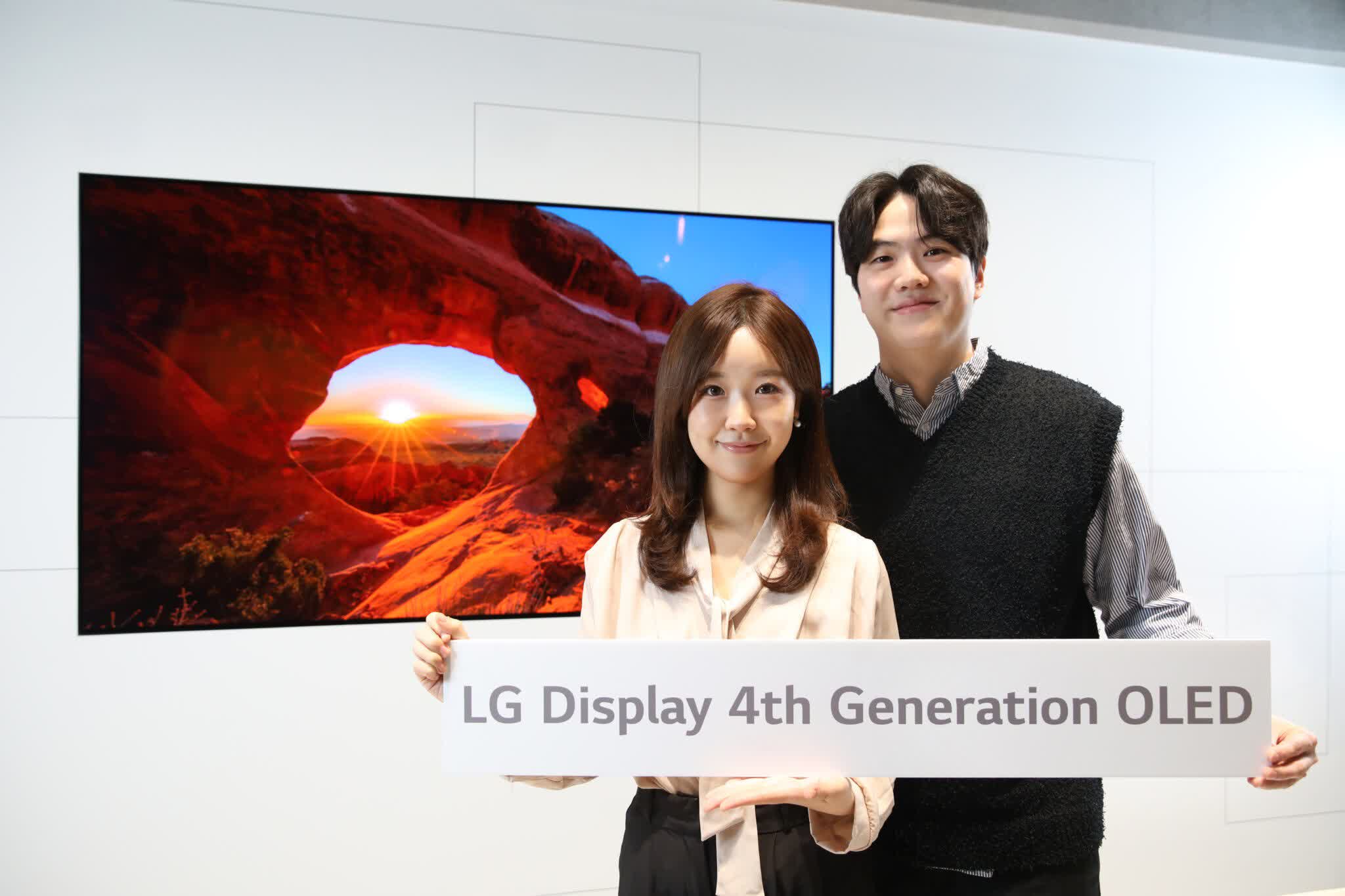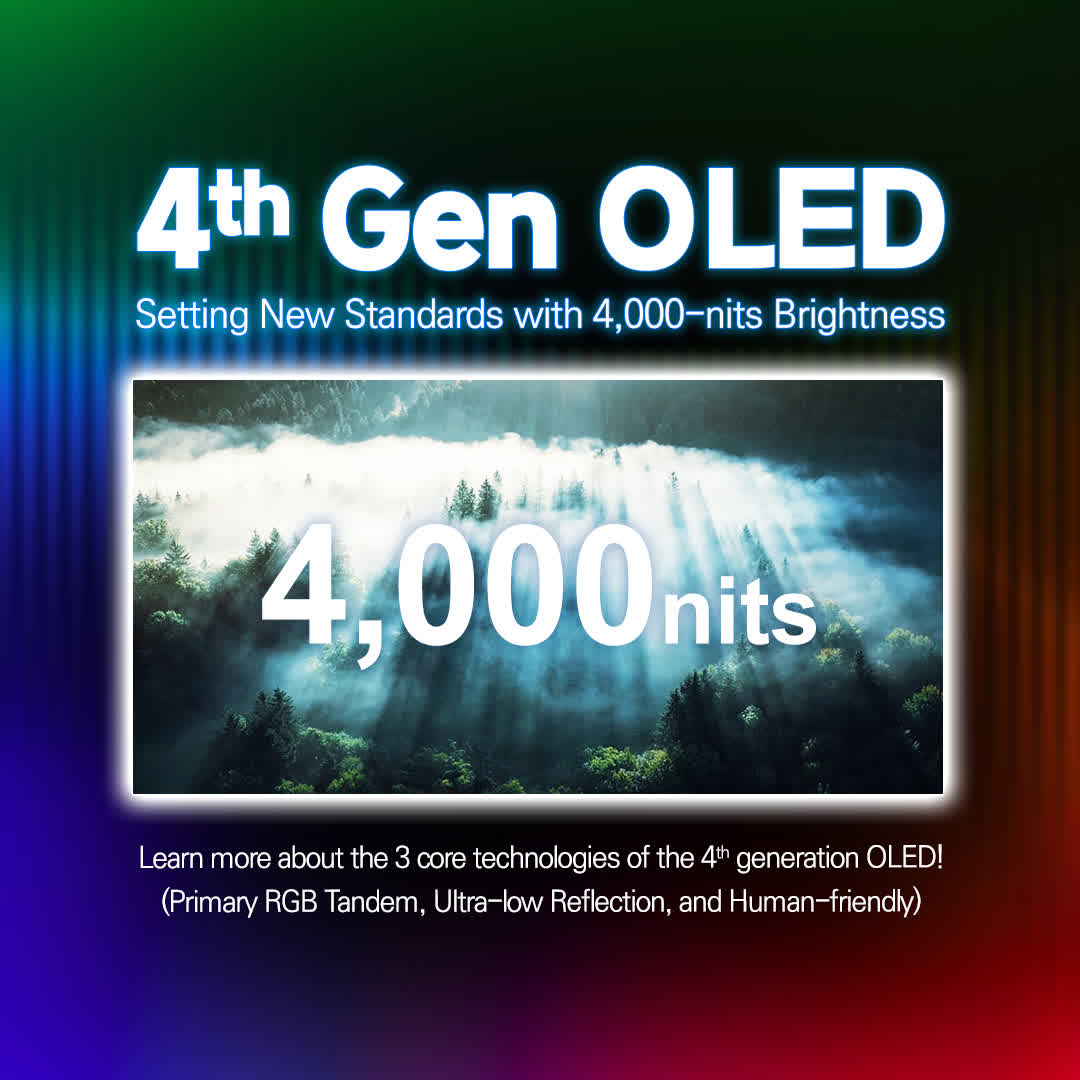LG plans to launch its brightest-ever OLED screen later this year. A new internal structure enables the fourth-gen panel to achieve a maximum brightness of 4,000 nits – about 30 percent higher than the previous generation.
The new display also boosts color brightness by 40 percent, increasing from 1,500 to 2,100 nits. These improvements are attributed to LG's updated primary RGB tandem structure, which has evolved from three to four stacks, sandwiching two layers of blue pixels between layers of red and green pixels.

Last year, the company proposed using the tandem system to increase resistance to burn-in – one of the primary drawbacks of OLED panels. The technology combines fluorescence and phosphorescent elements to increase blue light efficiency, which is the main cause of burn-in.
In addition, LG's fourth-gen panel also aims to address another issue common to OLED screens – reflections in bright rooms. The company claims that its new special film blocks 99 percent of light reflected from and within the display's surface.
LG said the primary use case for the brightness and energy efficiency improvements is – wait for it – AI. Similar to how PC hardware manufacturers recently began promoting AI PCs that run GenAI workloads locally, TV companies like LG and Samsung are trying to sell the concept of "AI TVs."

An AI customization page on LG's website reads like the industry discovered a new buzzword to convince consumers to upgrade their TVs again. The company is promoting AI as the next stage in the evolution of smart TVs.
AI-powered features include acoustic tuning and brightness control, which analyze a user's room to adjust sound and brightness automatically. Additionally, AI director processing optimizes color distribution, while super resolution technology upscales images to 8K while preserving film grain. Other AI features include a "picture wizard" to assist users in navigating settings and a chatbot to provide troubleshooting support. Needless to say, these all sound like a bunch of nothingburger features, but I digress.
LG has yet to disclose shipping dates for their latest OLED panels, but they are expected to appear in flagship TVs sometime this year, followed by OLED gaming monitors.
Although the need for AI features remains unproven, the newly announced quality and reliability improvements might contribute to OLED's already growing market share. At CES, LG said that 22 percent of PC gaming monitors are OLED compared to just 18 percent of TVs. Samsung has also seen a surge in OLED sales and is preparing models capable of reaching 500Hz refresh rates, but high prices remain the biggest obstacle to wide adoption.
LG's next-gen OLED panels promise 4,000 nits brightness and better burn-in resistance
